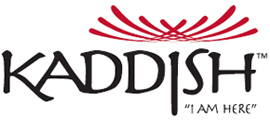LITANY / KADDISH PRAYER
Litany is the the turning point in the Kaddish narrative. It begins the final section of the work, Tikkun Olam, (Repair of the World) meant to find some way to move forward from the ashes. It consists only of spoken words, and only these words: the names, dates and places of birth, dates and places of death of 2,037 from among the millions who perished in the five extermination camps of the Nazis during the height of the Holocaust: 1942-44. The movement begins with a single voice, and we can clearly hear what is being intoned. One by one, voices enter, with ever-increasing frequency and soon the audience hears a cacophony of voices. There is a loud unintelligible buzz, like in a densely packed train station, as each individual on stage- chorus, soloist, instrumentalist- recites the names on his or her individual list.
In creating Litany, Lawrence Siegel asked Meagan Blais, a Keene State College sophomore who was his assistant as he was preparing the piece during 2007-2008, to go to the Yad Vashem database and find this information. Meagan soon became obsessed with the challenge: even this basic information about so many people known to have perished was difficult to find. The 2,037 souls who are named in Litany stand, in Kaddish, for the 6,000,000 Jews and millions and millions of others who died and whose memories are so extinguished as not to allow for even this simple naming. Anyone who participates in performing Litany and anyone who hears it, comes away haunted by the souls he or she is charged with naming, and moved to live on their behalf in some measure.

